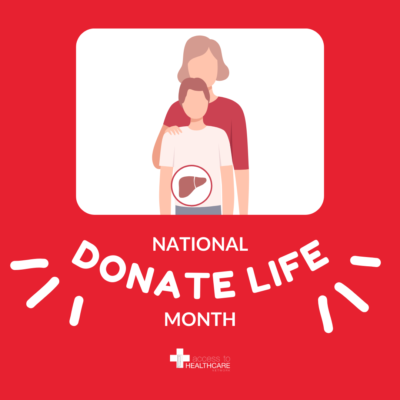5 FAQs about organ, eye, and tissue donations.
source by: Donate Life America

People of all ages and medical histories should consider themselves potential donors. Your medical condition at the time of death will determine what organs and tissues can be donated.
A national system matches available organs from the donor with people on the waiting list based on blood type, body size, how sick they are, donor distance, tissue type and time on the list. Sexual orientation, gender, gender identity or expression, race, income, celebrity and social status are never considered.
The list of organs and tissues that can be successfully transplanted continues to grow. So does your ability to save and heal lives as a deceased organ, eye and tissue donor. One donor can save up to eight lives, restore sight to two people through cornea donation, and heal more than 75 lives through tissue donation. Here’s what can be donated, Click HERE.
Your life always comes first. Doctors work hard to save every patient’s life, but sometimes there is a complete and irreversible loss of brain function. The patient is declared clinically and legally dead. Only then is donation an option.
Deceased organ donation is the process of giving an organ or a part of an organ, at the time of the donor’s death, for the purpose of transplantation to another person. Only after all efforts to save the patient’s life have been exhausted, tests have been performed to confirm the absence of brain or brainstem activity, and brain death has been declared, is donation a possibility.
The state donor registry and National Donate Life Registry are searched securely online to determine if the patient has authorized donation. If the potential donor is not found in a registry, their next of kin or legally authorized representative is offered the opportunity to authorize the donation. Donation and transplantation professionals follow national policy to determine which organs can be transplanted and to which patients on the national transplant waiting list the organs are to be allocated. Read more about the deceased donation process.
Although donation and transplantation can take place successfully between individuals from different racial or ethnic groups, transplant success is often better when organs are matched between people of the same racial or ethnic background.
People of African American/Black, Asian/Pacific Islander, Hispanic/Latino, American Indian/Alaska Native and multiracial descent currently make up nearly 58% of individuals on the national organ transplant waiting list. These communities are in great need of more organ and tissue donors.
To learn more about about organ, eye and tissue donations, visit: donatelife.net
Click HERE, to register today to become a donor today!



